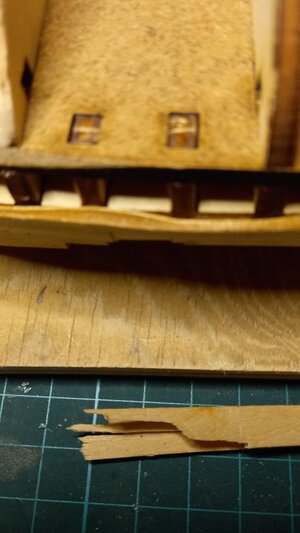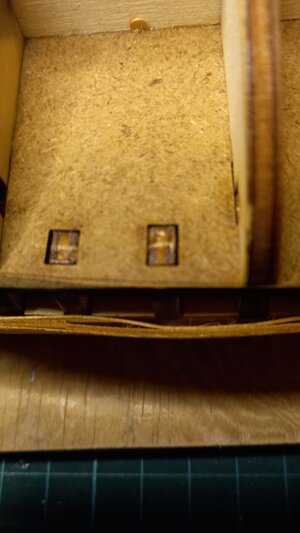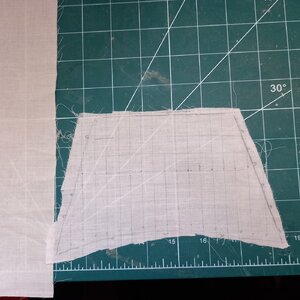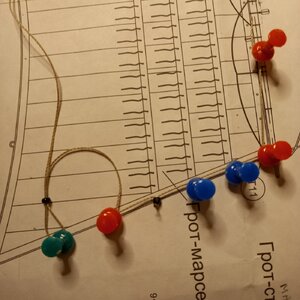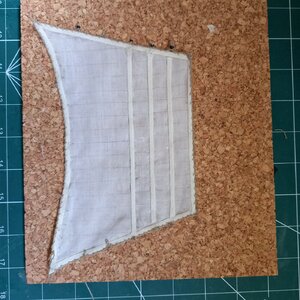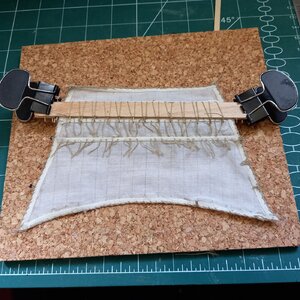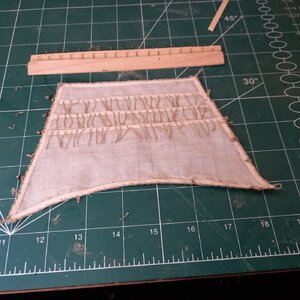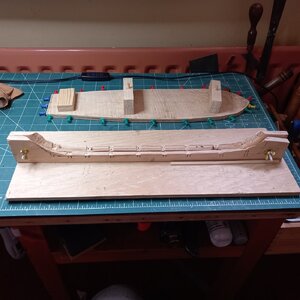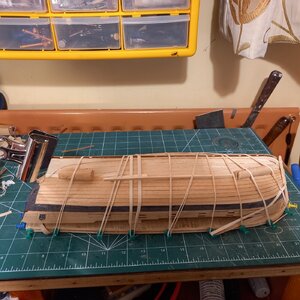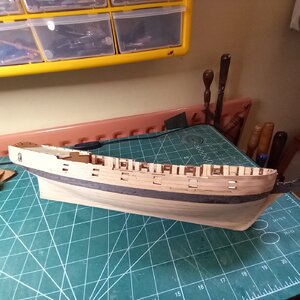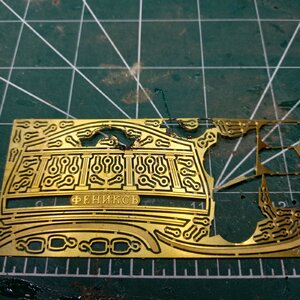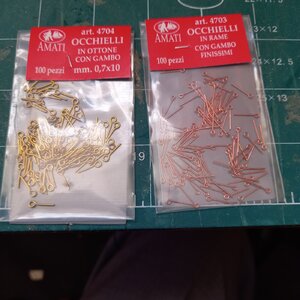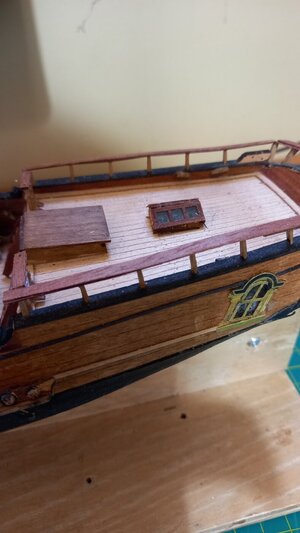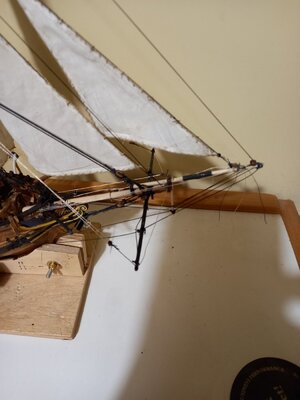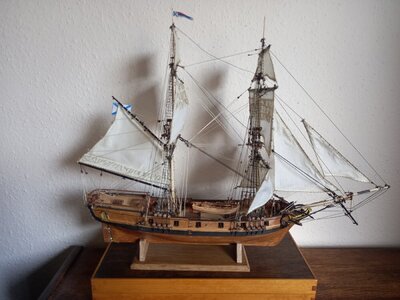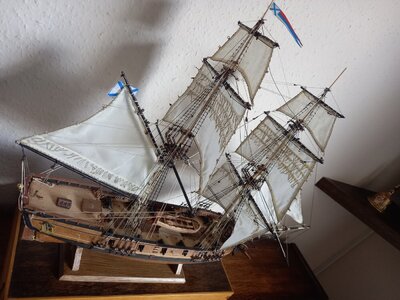This will probably be more of a twig then a log. Moreplovac has written a wonderfully detailed build log for this model accompanied by magnificent photos which I am quite incapable of matching. I will confine this log to aspects which reflect my personal experience of building Phoenix.
I chose this model for a number of reasons. I have just completed the Corel Vasa after almost a year of work. This involved a lot of very repetitive work: gun ports, gunport lids, ratlines etc. so I fancied something a little simpler. All previous builds have been 3 or 4 masted so a brigantine is appealing. Comments on this site have spoken in favour of this kit manufacturer and I am intrigued by the inclusion of specially shaped planking.
Also, I am running out of space for displaying any more large models but there is space of limited height on top of a bookcase that I can commandeer without causing a mutiny. The Phoenix will fit there and can engage in war games with Golden Hind. On previous builds I have wimped out of including sails. I shall venture into this new territory on this build. Again, a brigantine seems to be a bit less ambitious than, say, Cutty Sark (with studding sails of course).
I was very impressed during the initial stages of building this kit. The pieces such as keel, bulkheads and decks are very accurately cut; they fit together beautifully and positively. The plans and diagrams are clear and detailed. The translated instructions are occasionally (and understandably) a bit confusing: references to the "conductor" baffled me for a while until I realised the alternative translation "guide" would have been more familiar. English has too many synonyms with nuances!
The problems began when I got beyond this initial stage. The quality of some of the materials in the kit is very poor. More on this later.



